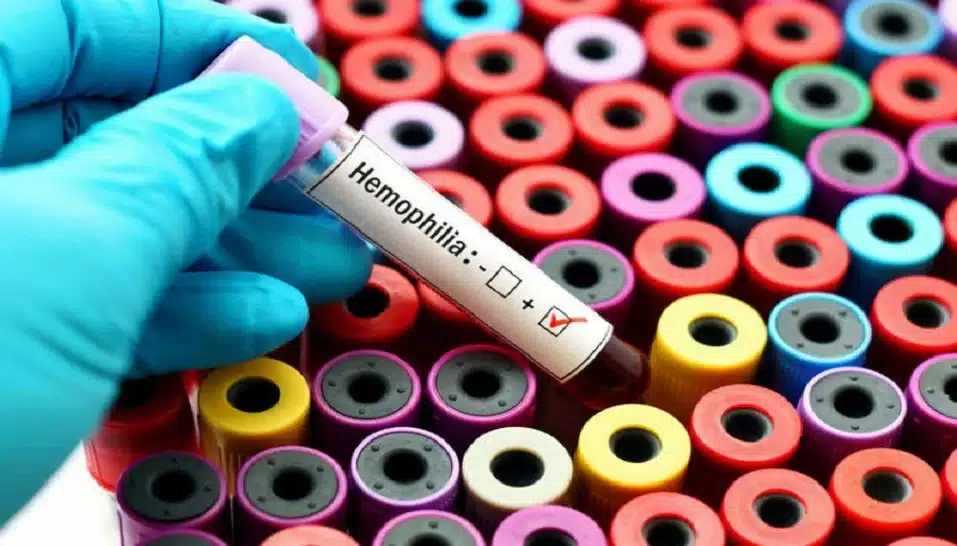Hemophilia is a rare genetic disease that can cause excessive bleeding due to deficiencies in the blood. 2 in 100,000 Asians have the condition, and it is more prevalent among men than women.
On the 17th April of every year, landmarks around the world light up in red to create awareness about bleeding disorders. The day is marked as “World Hemophilia Day” and is observed to create awareness about hemophilia – a genetic bleeding disorder that affects 0.3% of the world’s population, largely men.
The rarity of the disease has meant a dearth of data and awareness about the condition. Moreover, those diagnosed with hemophilia are currently at a higher risk of contracting COVID-19.
At HealthLEADS, we shed some light on the disease and its prevalence in Asia.
What is Hemophilia?
Hemophilia is a type of bleeding disorder that is in a majority of cases inherited at birth. It is characterised by deficiencies in the blood which prevents blood from clotting properly. As a result, a person diagnosed with the condition suffers from excessive bleeding. In most cases, excessive bleeding occurs at the time of a physical injury or surgery, but in some cases, patients suffer from internal bleeding.
The prevalence of disease could be mild, moderate or severe, and is often categorised into A, B, C or Von Willebrand disease based on the type of blood factor that is found deficient at diagnosis.
Hemophilia has been found to be more prevalent among males than females.
How is it detected?
Hemophilia is in most cases inherited, and therefore categorised as a genetic bleeding disorder. Like with other genetic bleeding diseases, excessive bleeding is observed in infancy and childhood.
As published by Stanford Health Care, symptoms in infancy include:
- Bleeding into the muscle, which causes a deep bruise after the baby gets a routine vitamin K shot;
- Bleeding that goes on for a long time after the infant’s heel is pricked to draw blood for newborn screening tests;
- Bleeding that goes on for a long time after a baby is circumcised; and
- Bleeding in the scalp or brain after a difficult delivery or after special devices (vacuum or forceps) are used to help deliver the baby
In milder cases, the disease could be detected in the later stages of life with common symptoms being:
- Bleeding into a joint or muscle, which causes pain and swelling;
- Bleeding that is not normal after an injury or surgery;
- Easy bruising;
- Frequent nosebleeds;
- Blood in the urine; and
- Bleeding after dental work
Hemophilia is diagnosed based on the observed symptoms and blood tests that measure blood count.
Is it preventable?
As hemophilia is a genetic disorder, it is not preventable. A flaw in the gene causes the disease, which is then passed on to generations along the same blood line.
How prevalent is it in Asia?
In 2019, it was estimated that 2 in 100,000 Asians have hemophilia.
However, there is still a dearth of global and national data on hemophilia. Recent studies have found that the disease is much more prevalent than what has historically been reported.
Based on data collected between 2012 and 2018, the United States Centers for Disease Control and Prevention found a 77% increase in the number of cases since the 1990s.
A meta-analysis of national registries from Australia, Canada, France, Italy, New Zealand, and the United Kingdom published in the Annals of Internal Medicine in 2019 estimated over 1 million cases of hemophilia worldwide with a prevalence of 17.1 cases per 100,000 males. Most cases were found to be severe, with moderate and mild cases of the disease constituting a small share.
An analysis of data published by IHME in 2019 shows the prevalence of hemophilia across Asian countries. Of the 34 Asian countries for which data was available, Iran showed the highest prevalence of hemophilia with 12.1 cases per 100,000 population. India reported 1.7 cases, one of the lowest prevalence rates in the Asian region.
How is hemophilia treated?
As hemophilia results in excessive blood loss, those with the condition are advised to take precautions to avoid injuries or while engaging in activities that could cause bleeding.
For children, parents are advised to cushion sharp objects, and use padded clothes and helmets. Extra precautions must be taken when the child engages in sports and other outdoor activity that could cause physical injuries.
Immunizations and other injections may need to be administered through the subcutaneous method instead of the intramuscular method.
Additional measures such as infusions will typically be taken before surgery or dental work to increase clotting prior to the procedure.
Since the 1990s, Gene Therapy has been under consideration for the treatment of hemophilia. In 2003, China approved the first gene therapy product to treat hemophilia. Gene therapy introduced a normal gene into the patient’s genome to repair the gene mutation that is causing the disease.
Several gene therapy products under trial have shown extremely positive efficacy rates, promising a paradigm shift in the treatment of hemophilia.
If you have a genetic history of hemophilia or suspect that your child has hemophilia, consult a physician for treatment, as it varies depending on the severity of the disease.
For more information on hemophilia diagnosis and treatment in India, contact the Hemophilia Foundation.

















